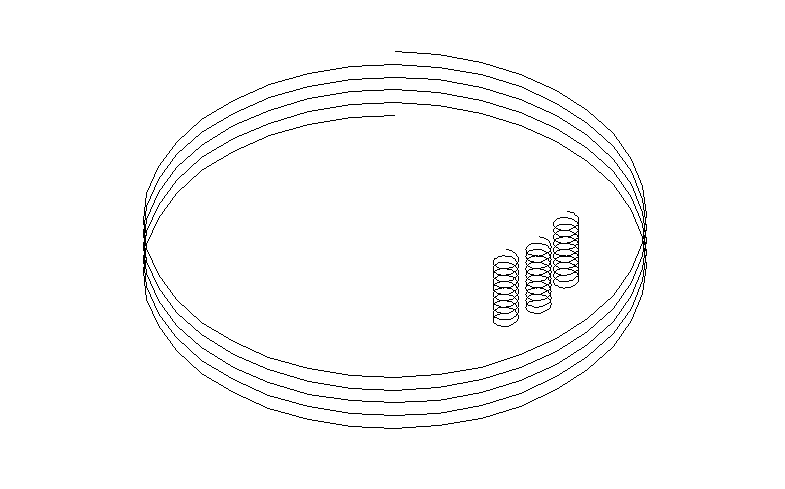Session 6 - 9
PASSIVE TELEMETRY FOR LOCALIZED
INTERNAL TEMPERATURE MEASUREMENT
Paulo José Abatti, Bertoldo Schneider Jr. & Marcos Santos Hara
Centro Federal de Educação Tecnológica do Paraná
Av. Sete de Setembro, 3.165, Curitiba, PR, Brasil, CEP:80230-901
INTRODUCTION The aim of this work is to present a localized internal temperature measurement system. The implantable unit, using a thermistor bridge is completely passive, and power and communication are realized using only one external coil.

METHODS The developed system is composed by an implantable unit, an external circuit (in a belt format) and a remote device connected to a computer. The implantable unit has been described previously [1]. Basically, it transmit information (temperature) changing the resonance frequency of two tank circuits, and a third coil is required for powering. In order to allow power and communication using only one external coil (see Fig.1), thus minimizing misalignment problems [2], the external circuit was designed using a time-sharing technique. During about five time constants (t @ 400ms) the external coil is excited using a constant frequency signal (480kHz), powering the implantable unit. After that, during a period of about one time constant (80ms) the external coil is excited using a frequency variable signal (sweep from 600 to 800kHz), allowing the measurement of the internal resonance frequency of the tank circuits. Then, the external circuit digitalize the received information, transmitting it through a omnidirectional 107MHz radio (working range 17m). The remote unit receives and process the signal, sending it through a serial interface to a personal computer. The developed software generates tables, graphs and is able to store the data for posterior analysis.
RESULTS The measured system sensibility is 0.01ºC. Practical experiments has shown a less then 1% mean error in the 30 to 50ºC temperature range.
DISCUSSION "In vitro" experiments proved the viability of localized internal temperature measurement, a thermotelemetry system, using a passive implant unit and only one external coil. "In vivo" experiments are planned to be made early in 1.997.
[1] Abatti, P. J. & Schneider Jr., B., 1994, "A Method to
Reduce Sensor Bridge Dependence on Loading and Excitation Voltage", Rev. Sci.
Instr. 65(3), p 756-757, 1.994.
[2] Soma, M., Galbraith, D. C., & White, R. L., 1987, "Radio-Frequency Coils in
Implantable Devices: Misalignment Analysis and Design Procedure", IEEE Trans. Biomed.
Eng., BME34(4), p276-282.